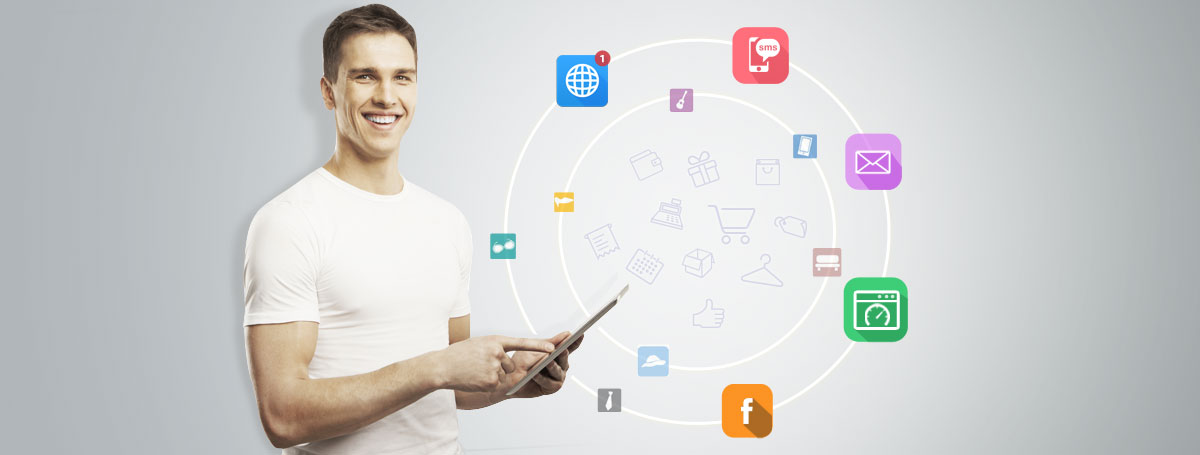
Online e-commerce initially became popular because of convenience. People enjoy the ease of shopping online and receiving packages delivered to their doorstep. This being the case, it’s vital for eCommerce stores to attract visitors to their site and to perform well in search queries.
In addition to search engine optimization, it’s crucial for eCommerce stores to enhance product discovery. Many times, online shoppers don’t necessarily know what they’re looking for, and they welcome suggestions on new trends or hot products geared to their interests.
If you want to stand out and get their attention, it becomes important for you to showcase your products to the right target audience.
In store-Merchandising
In brick-and-mortar retail stores and malls, discovery is enhanced by strategic in-store merchandising. Store layouts are designed to ensure that certain products get the right attention. There is a store assistant who also makes sure that the customers get the help they need.
E-Merchandising
On-site merchandising (or e-merchandising) involves showcasing the right products throughout your site, as well as personalized recommendations based on user behavior. It is important to keep showcase sections on your site dynamic, adapting to the external trends, and reflecting the freshness of your product catalog.
Multi-channel Merchandising
It is not enough to do good merchandising on the website and wait for users to come. Your products should reach out to your users wherever they are. Let’s give a name to this concept – push merchandising. Your customers will appreciate receiving product recommendations, updates about new products, and content related to space. These sorts of promotions increase engagement with your brand. Visitors are more apt to remember what you care about, and you stand out from most businesses that still inundate mailboxes with offers.
The big gap today in marketing is the lack of focus on enabling product discovery. You can add value to your customers and enhance your brand recall at the same time by helping them with this. Showcasing your products to the right audience on their most preferred channel can set you apart from other brands that do not do this well.
How to Reach Visitors After They Leave Your Site
Email:
Email remains the most popular medium to reach your users. This is your most loyal audience. To get their attention in the promotional tab, use subject lines that stand out and relate to their interests (their favorite category on your site, last purchase, or something trending now).
The open rates you get on emails depends on the subject lines, your history of sending them good content, and their affinity to your brand. You can get open rates as high as 50% for personalized email, and as high as 11-14% for good promotional emails that add value.
Next, even if you spend a lot of time creating beautiful banners, do not expect your busy users to click on them. Instead, present them with products inside the email body.
The benefits are that they discover more products, you save them a click, and there is more chance that one of the products displayed will actually interest them enough to click.
Click rates of up to 2% are considered good for email campaigns. While the click rate is one of the simple metrics to measure the performance of your campaigns, you should consider that the more familiar your customers are with your products, the more likely they are to come and eventually buy something.
Social Media
Next, do not leave out your social media followers. Facebook posts do not have to be limited to specially designed contests and banners. These are nice, but need a lot of hard work.
Product posts such as simple product images can give your fans a feel of what you have without coming to your site. Keep them updated with the most popular products on your site, or the latest, or the ones with markdowns. Keeping a continuous stream of posts going can increase your odds of reaching your fans.
Browser Notifications
There are other channels to reach your users too – for example, browser notifications. These are mechanisms exposed by browsers like Chrome, Firefox, and Safari to send notifications to the user with a simple opt-in.
The good part is that this works on mobile browsers, without the need for an app. While this is a powerful mechanism to reach your users, it can backfire if over-used for outright in-the-face promotions.
Ask your users to opt into these notifications to give them some specific value, such as price drop alerts, occasional product updates, and content, or personalized recommendations. For these to be effective, you should observe the response to your campaigns and manage the frequency based on how your customers respond to these messages.

